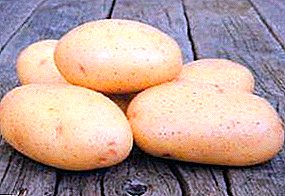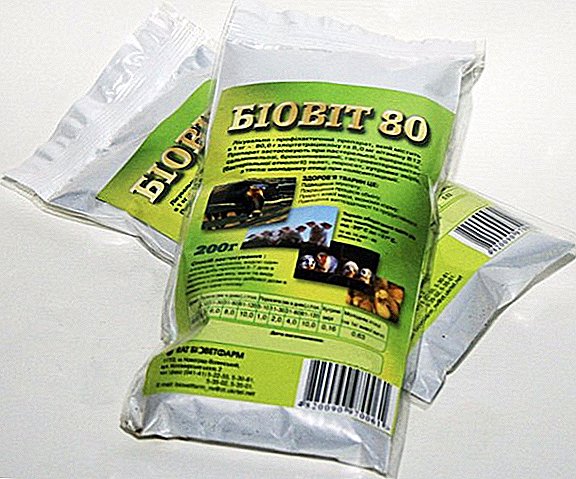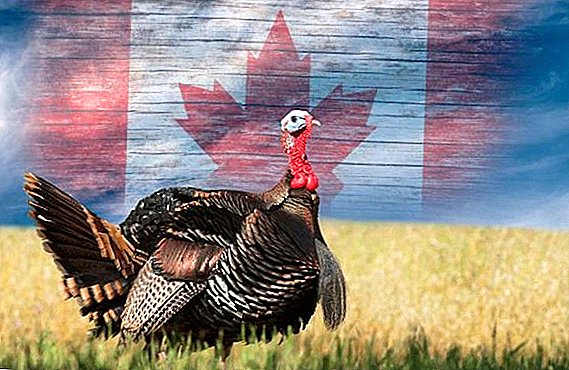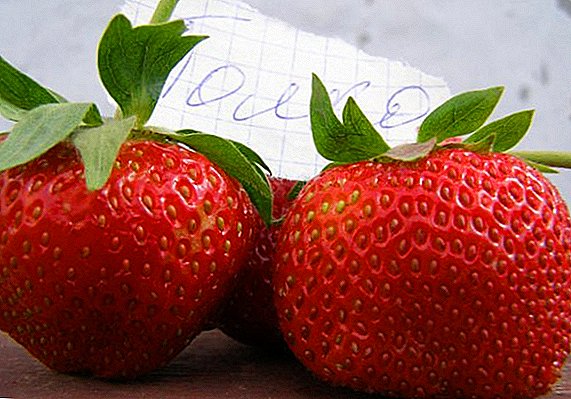 When broiler chickens are raised, poultry farmers often encounter a characteristic problem - these birds have difficulties with their legs, which results in their dropping to their feet. These problems can develop to the complete immobilization of the bird. Such symptoms can be caused by various reasons, which will be discussed in this material.
When broiler chickens are raised, poultry farmers often encounter a characteristic problem - these birds have difficulties with their legs, which results in their dropping to their feet. These problems can develop to the complete immobilization of the bird. Such symptoms can be caused by various reasons, which will be discussed in this material.
The reasons
The main causes of broiler legs problems are the following:
- errors in the content of the bird;
- lack of vitamins;
- chicken disease rickets;
- various infectious diseases.
Consider them in more detail.
Did you know? The exact number of domestic chickens can not be calculated, but according to experts, there are approximately 19 billion of them in the world.
Bad content
Often the cause of chickens falling on their feet is a violation of their conditions. For them, the optimum temperature is in the range of + 23 ° C ... + 25 ° C with a humidity of not more than 75%, good ventilation and no drafts.
In the first days after the appearance of the light, the air temperature in the chickens room should be + 33 ° С, and its decrease to the above range should occur gradually. 
Avitaminosis
This disease occurs due to the long absence of any vitamins in the poultry diet.
Take a closer look at the characteristics and features of the content of the best breeds of broilers.
The problems with the coordination of movement and the condition of the limbs are affected by:
- hypovitaminosis (vitamin deficiency) A - wagging gait, movements in a circle, falling;
- hypovitaminosis D - lameness, trembling limbs, their deformation;
- hypovitaminosis E - partial paralysis of the limbs, their twitching;
- hypovitaminosis B - in addition to other symptoms (growth retardation, dermatitis, conjunctivitis, etc.) paralysis of the limbs may be observed.
Rickets
This disease is a consequence of hypovitaminosis D, as well as a lack (or vice versa, an overabundance) of calcium or phosphorus, metabolic disorders due to the consumption of food, affected by fungi. In a sick bird, the bones soften and deform, weight gain slows down, and it moves with difficulty. 
Infectious diseases
They also affect the ability of broilers to move normally and infectious diseases, namely:
- Newcastle disease (pseudotum) - A viral disease, the symptoms of which, along with high fever, the outflow of fluid from the mouth and blood in the feces, is a loss of orientation, accompanied by falls;
- pullorosis (white bacillary diarrhea) - The causative agent is the bacterium Salmonella pullorum, the sick bird sits for a long time in place with its wings down and its eyes closed, it looks disheveled externally, the litter becomes whitish;
- Marek's disease - the cause is infection with herpesvirus, a sick bird has lameness, partial paralysis, vision problems, followed by a change in the color of the iris (a gray tint appears), slack tail and wings, along with unnatural inversion of the neck;
- coccidiosis - Caused by bacteria, coccidia, patients become inactive, long sitting, losing their appetite and drinking a lot, their comb and earrings fade, paralysis or convulsions may be observed;
- aspergillosis - The causative agent is pathogenic mold, the diseased become inactive, their feathers grow dull and disheveled, the wings descend, shortness of breath and diarrhea are observed, with time paralysis occurs;
- various types of arthritis, resulting in inflammation of the joints of the lower extremities or tendons - usually this disease is caused by pathogenic microorganisms (salmonella, staphylococcus, streptococcus, mycoplasmosis, etc.).

Important! Newcastle disease does not respond to treatment - because of the danger of its rapid spread, the infected youngsters are isolated, the corpses are destroyed. In addition, the treatment methods for Marek's disease have not been developed, but a sick bird, which should be immediately isolated from healthy, has a chance of self-recovery.
Other reasons
In addition to the above, there are other reasons for the falling of broilers to their feet, namely:
- excessive sterility, expressed in too frequent change of litter and continuous activities (almost daily) for the disinfection of the chicken coop;
- with a quick weight gain, the body of the chicken does not have time to adapt to it, as a result of which the limbs do not hold the body because of the underdeveloped bones;
- dyschondroplasia of the tibia - a violation of the formation of cartilage that is under the knee joint of a chicken, due to poor-quality feed or unbalanced nutrition;
- Pododermatitis, which is an inflammation of the soles of the paws, leading to cracks in the soles, problems with the movement of the broiler and its vulnerability to infections;
- perosis - caused by improper formation of bones of the limbs due to a lack of manganese and zinc in the diet, which is externally manifested as inversion of the leg in the joint;
- stretching the legs to the side or forward, which leads to the fall of the bird - pathology can be caused by disturbances in the process of incubation or improper development of the loins.
It is important to know what are the causes of death of broilers.

Treatment
For the treatment of broilers, various methods can be used depending on the disease: the use of medicines, the introduction of vitamins and minerals into the diet, changing the conditions of detention. Drug treatment may vary the dosage of drugs depending on the age of the bird.
Important! If you see signs of disease in poultry, it is recommended not to try to diagnose and prescribe treatment yourself, but to consult with a veterinarian is the surest way to successfully treat diseased chickens or preserve the remaining livestock.To cure broilers from pullorosis, use drugs "Furazolidone" or "Biomitsin", which are added to the feed according to the instructions, taking into account the age of the birds.
To cure coccidiosis, apply a number of different drugs: "Intracox", "Baykoks", "Amprolium", "Koktsidiovit", "Khimkotsid". Method of administration, dosage and duration of therapy depend on the form of the drug, all these nuances are described in the instructions for use.
With the disease aspirgillosis An effective method of treatment is the sublimation of iodine monochloride at the rate of 0.5 ml iodine per 1 cu. m. premises. The drug is poured into containers and add aluminum powder in the ratio of 1:30.
Learn how to properly feed broiler feed.
The procedure lasts 30-40 minutes for 3 days. After the procedure, the room is ventilated. After 3 days, the cycle is repeated.  Iodine monochloride is used to treat the room. In the case of arthritis effective treatment with the use of drugs "Ampicillin", "Sulfadimetoksin", "Polymyxin M sulfate". The dosages, the route of administration and the duration of the course of treatment are indicated in the instructions for these preparations.
Iodine monochloride is used to treat the room. In the case of arthritis effective treatment with the use of drugs "Ampicillin", "Sulfadimetoksin", "Polymyxin M sulfate". The dosages, the route of administration and the duration of the course of treatment are indicated in the instructions for these preparations.
In order to get rid of rickets, change the diet of broilers. With a lack of calcium, chalk or bone meal is injected into it. If the feed is affected by mold, change it to a better one. Vitamin D in premixes is introduced into the ration; if possible, regular walking of birds is organized, this is especially useful on sunny days.
We recommend to know why broilers sneeze, wheeze and cough, as well as the reason for the weight gain in birds.
When identifying hypovitaminosis Depending on the type of vitamin deficiencies, various vitamin preparations, germinated grain, herbal, fish or bone meal, mineral supplements are introduced into the diet of broilers. In advanced cases, as prescribed by a veterinarian, special drugs are used for the treatment, such as Retinol Acetate Solution, Akvadetrim, Riboflavin, etc.
Pododermatitis is treated by changing the conditions of maintenance: the coarse and dampened litter changes to a dry and softer litter, it is recommended to treat the litter with the “Dutrion” preparation. Bran and premixes containing vitamins of group B are introduced into the diet.
Bran and premixes containing vitamins of group B are introduced into the diet.
Did you know? The Indonesian breed of hen Ayam Tsemani differs completely black color: its representatives have black plumage, scallop, earrings, limbs, beak. Their meat is also black, and even the blood is noticeably darker than normal.
Preventive measures
In order not to lose bird livestock in the fight against various diseases and pathologies, it is necessary to seriously engage in their prevention. The following preventive measures are recommended:
- eggs for the incubator and chickens should be purchased in large farms or from proven breeders, because otherwise there is a risk to buy them already affected by any diseases or pathologies;
- It is necessary to strictly maintain the recommended bird habitat conditions: temperature, humidity, good ventilation, and no drafts (in more detail, the optimal housing conditions are described above);
- it is necessary to regularly clean the chicken coop (with each change of livestock or after an outbreak of diseases), combining it with disinfection, but it should not be carried out too often, because excessive sterility can adversely affect the condition of chickens;
- nutrition should be balanced and high-quality, with the inclusion of vitamin and mineral supplements, the water in the drinker should be changed daily or more frequently to fresh;
- For the prevention of infectious diseases, various drugs are administered to the feed, such as BioMos, Baytril, Enrofloks, etc.
 So, the reasons for the fall of broilers to their feet can be very different - from poor conditions of detention to the disease of various diseases. Ignoring this problem can lead to the death of all livestock. The best way to deal with it is preventive measures, which should not be saved.
So, the reasons for the fall of broilers to their feet can be very different - from poor conditions of detention to the disease of various diseases. Ignoring this problem can lead to the death of all livestock. The best way to deal with it is preventive measures, which should not be saved.
Video: Why broilers fall to their feet and how to prevent this problem
Tips from netizens













